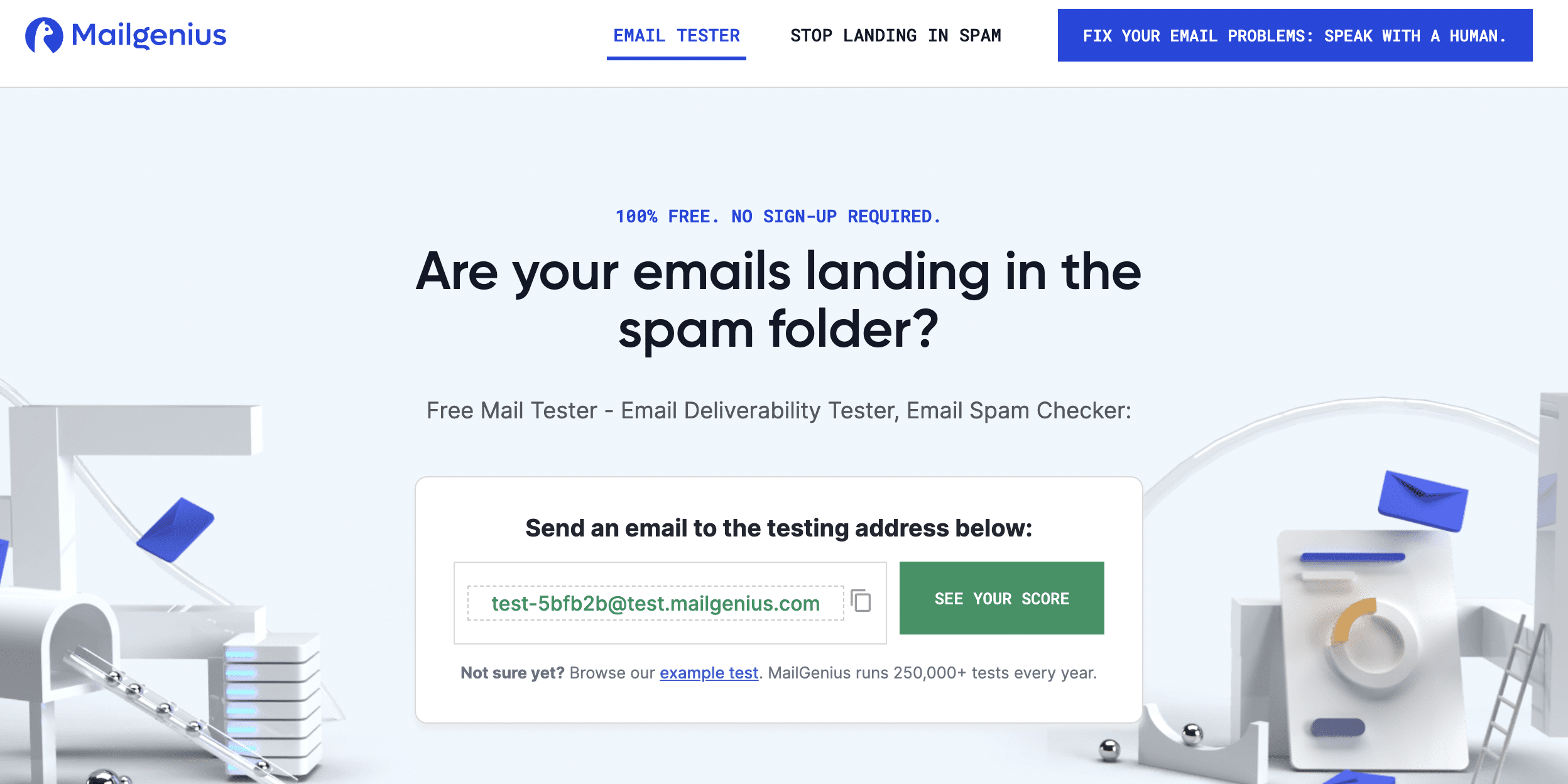You’ve finally made a decision to start your adventure with outbound sales, and you feel a wave of excitement. You know that if done right, outbound sales can become an awesome source of leads, so your expectations are high.
Then you sit down to write your first ever cold sales email, and you’re stuck!
Does that sound familiar? Worry not, we’ve all been there. All you need are a few rules to follow to write an effective cold email, which is why we’ve put together this list with sales email writing tips.
8 Tips to Writing Your First Cold Sales Email
1.Know your target audience
Before you start writing your first cold sales email, you have to make sure you know who you’re targeting. The content of your email should be all about them.
There are a few things you have to figure out:
- What sector they work in
- How big the company is
- Where they are located
- Are they male or female
- What their budget is
- What problems they struggle with
It’s a good idea to create an ideal customer profile, and make sure your entire outbound sales campaign is focused on it. If you don’t know where to begin, then this article will guide you through the process.
Solving the question how to write cold sales emails isn’t as much about writing as it is about doing actual research on your prospects.
2. Do proper research
You are writing a cold email… and believe it or not but they are called cold for a reason. You’re sending an email to a person you don’t know, what’s even more important is that they don’t know you either!
So why on Earth would they bother reading your email… not even mentioning replying to it.
It’s your responsibility to get to know them, and this means extensive research. Don’t limit yourself to just finding out what their name, job position, and company is. Dig deeper.
Find something you have in common, check out their social media profiles. Maybe you have some common connections, or you went to the same school or attended the same conference recently.
This will help you come up with an email that will appeal to them, which will increase your chances of getting a response.
3. Sort out your pitch
Get your pitch in order! If your prospect doesn’t understand what your product does, then they probably won’t respond to your email. Unless your copy is SO GOOD, they’ll reply asking “ok, but what does your product actually do?”.
And if they do, then you got a second chance, don’t mess it up! Adjust your pitch to your target audience and remember to address their pain points.
4. Create an appealing subject line
Writing your first cold email involves writing your first subject line. Better make sure it’s appealing, otherwise, your email will never get opened.
You spent all this time researching your prospects, writing content for your email, and they didn’t even open it. And no wonder if your subject line sucked!
Here are a few subject lines that will definitely annoy your prospects, so they’re better avoided:
- Re:
- A quick question
- Urgent
- Just checking in
- Meeting request
- and many, many others
We’ve come up with a subject line that gives us an 80% open rate. Feel free to steal it, you can find it here.
5. Your cold email opening line really matters
Another thing you have to remember about while writing your first cold sales email is your opening line. You have 6 seconds to make a good impression, and it’s not a lot.
However, since you know who you’re targeting and you’ve done extensive research on them, writing a good opening line should be a piece of cake.
Do you remember when I told you about finding something that you and your prospect have in common, like a shared connection, interest or an event that you both attended?
You might want to use this info here. If you need some inspiration for writing a good email opening line, then I’ve got you covered. Catch!
6. Personalize your message (no excuses)
If you want to write a cold email that gets a response then please personalize it. I can’t emphasize this enough…
Do you know what’s worse than receiving an email from a person/company you’ve never heard of?
Getting a generic cold email. This means sending the same email to a big group of recipients, you can call it a mass mailing.
Could you please make me feel a little bit special?
There are so many ways you can personalize an email, getting your recipient’s name right is the 1st step (you wouldn’t believe the number of times I’ve received an email that misspelled my name or worse, got it completely wrong). This gets an instant delete.
Personalized emails improve conversions by 10%. Do you really need more persuading?
7. Write and schedule your cold email follow-ups
When writing your first cold sales email, don’t forget about follow-ups. Not getting a response to your cold email doesn’t necessarily mean your email was bad. There might be dozens of reasons why your prospect didn’t reply, for example:
- Your email got lost in their mailbox
- They read it but they were too busy to reply
- Wrong timing – they aren’t interested right now (which doesn’t mean they won’t be interested in the future).
This is why it’s necessary to send follow-ups, if you don’t, you will miss out on a lot of opportunities.
Let’s put it this way, an outbound sales campaign without follow-ups makes zero sense, trust me I work at Growbots – and this is what we do for a living.
8. Automate your outreach
After you finish writing your first cold sales email, and you’ve got your follow-ups ready, you need to send them.
You should automate your outreach, not just for the sake of not having to remember about sending all your emails, but also because some of the tools (like Growbots) can optimize your email sending time for you, and in turn improve your open rate.
Also, you’ll have access to analytics, and it’s priceless because data allows you to make smart decisions. And since it’s the beginning of your outbound sales journey, checking stats regularly is key to success.
9. Write shorter emails
Yes, really. While it may be tempting to try and provide your prospects with as much information as possible about your company (because let’s face it, you’re pretty awesome..), this isn’t the best approach to writing sales emails.
Not only are your prospects likely to be extremely busy, they’re also being bombarded with sales messages left and right, and the harsh truth is they don’t really care about you. Yet.
It’s important you try and approach your first sales email the right way and realize it actually isn’t about sales. It’s about starting a conversation.
While this may seem counterintuitive at first, using your first email as more of a foot in the door (rather than an attempt at already trying to work towards closing a deal) will help you in the long term. Turns out, writing a good sales email actually isn’t so much about sales.
The whole point of sending your email is to get a response from your prospects and short emails do the trick far better than longer ones. Prospects don’t know you and opening your message is already a big step for them. Next, they’ll quickly scan your message to see if it’s actually worth investing time into this and if it seems like too much work, they’ll skip the email altogether.
A good exercise that will show you how to write a cold sales email that converts is by pretending to write your email to a lifelong friend or to a colleague. Emails you write to them will usually be to the point and written in a more casual manner.
While you’ll definitely want to keep things professional when writing to prospects, it’s also important to keep in mind you’re writing to someone who’s a human – just like that good friend or colleague of yours. Which is why writing short and simple emails might be the most important tip on our list of sales email writing tips.
10. Make sure your emails aren’t landing in SPAM
Writing a good sales email is only half the battle. Because if no one ends up reading your emails, all your troubles will have been for nothing.
Low open rates are the nightmare of many sales reps, however very few know what to actually do against it. Plenty of time is spent learning how to write cold sales emails while the technical side of things often ends up being neglected.
While we won’t expect you to learn all the ins and outs of sending emails, knowing what stops your email from landing in the inbox is important. And while DNS settings and DMARC records will play a big factor in your email deliverability, knowing how to write a cold sales email is also very much about knowing which words not to use.
Here are a few key points to keep in mind before hitting send:
Test your DNS settings. Trying to figure out what things should look like on your own might be too much to ask if you don’t have a technical background. Which is why MailGenius is such a great resource.

Simply send your email to the email address specified, wait a few seconds, and find out what score is given to your current technical setup.

Mail Genius checks the most important records when it comes to sending emails such as DKIM, DMARC, and SPF records and provides you with step-by-step instructions on how to solve any potential issues.
Avoid using links. An email containing links is far more likely to be blocked by spam filters than an email without any links. The main reason behind this is that it’s difficult to know exactly where any links are leading to, and spammers with bad intentions will almost always try and entice recipients to click on links leading to malicious websites. In order to show spam filters your message doesn’t come with bad intentions, leaving out links as much as possible is vital.
Avoid SPAM words. Did you know using the word “Rolex” adds to your “spam score”? Turns out, spam filters have learned to recognize words often used by spammers (“A few extra inches..”) and are actively blocking emails containing these words. Which is why it’s important to rethink what you’re writing.
If for example you’re offering a free audit as part of your sales process, knowing that the word “free” is a potential spam trigger is important. Instead, consider rephrasing your offer and perhaps mention a “complimentary audit” instead.
11. Rethink your CTA (Call-to-action)
Going straight for the kill is tempting when writing a sales email. How many emails have you read that end in “do you have 15 minutes tomorrow to discuss”? Let’s be honest: you probably didn’t love the idea.
You’re busy and carving out 15 minutes to meet with a sales person to talk about their product probably doesn’t seem like much of a priority to you. Turns out, the exact same is true for your prospects.
Which is why ending your email with a softer ask could be the better way to achieve what you were hoping for. Research has shown that ending with questions such as “curious to learn more?” or “is that something you’re interested in?” have led to better response rates and in the end more sales calls booked.
What’s next?
Do you think we are missing something? Maybe you’re an outbound sales expert and you have some tips for writing your first cold sales email? Feel free to share them!





















